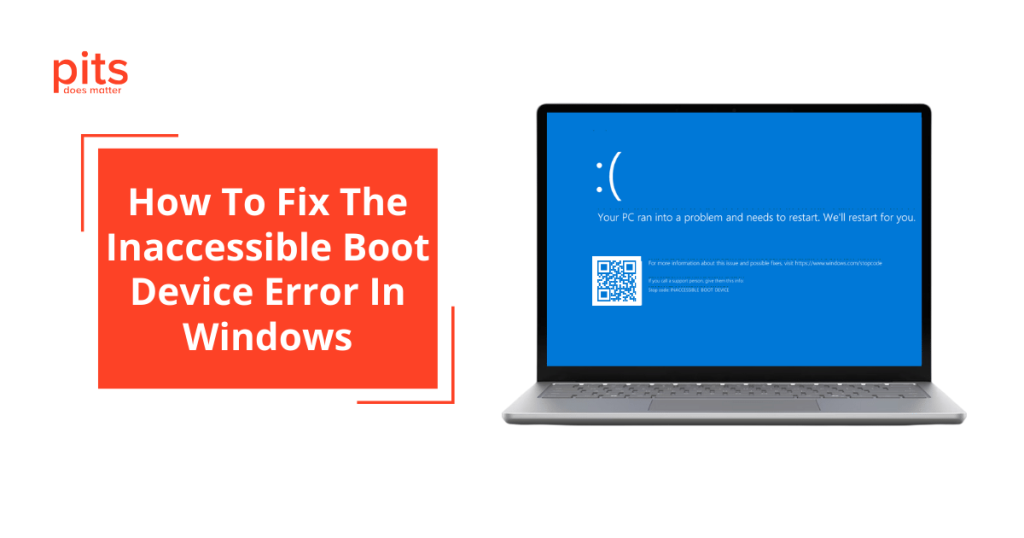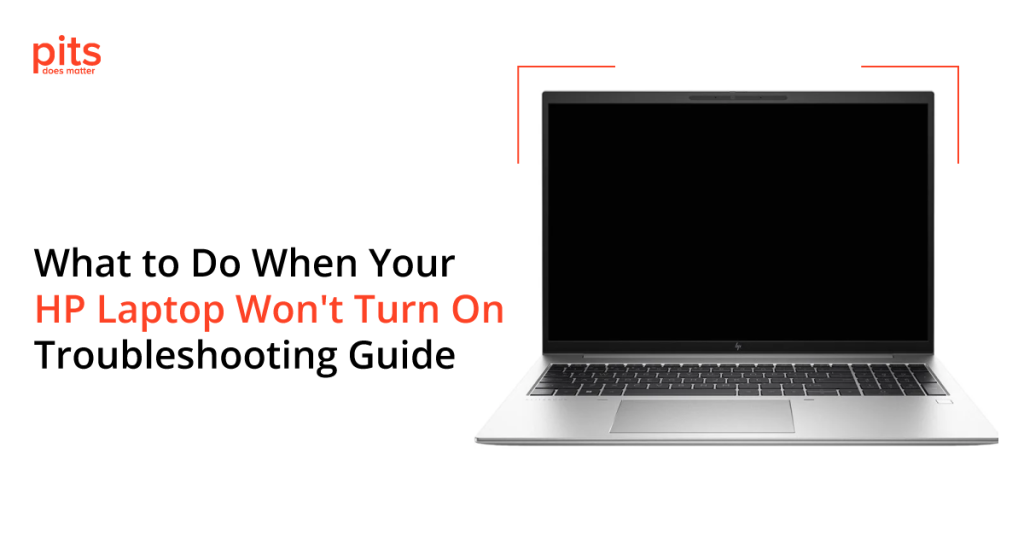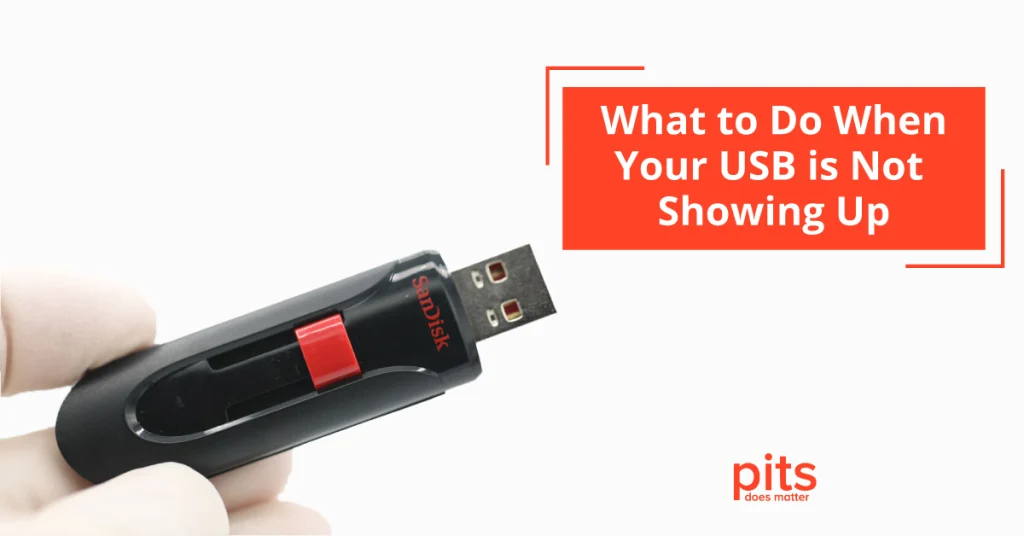Why is my SD card not showing up on my computer? If your SD card isn’t appearing on your computer or device, it could be for a variety of reasons, such as incorrect insertion, compatibility issues, or damaged card readers. Begin by making sure your SD card is properly inserted into the slot with the correct orientation. If the issue continues, test the card on a different device to eliminate compatibility or hardware problems. Moreover, checking the card reader’s functionality with other cards can help pinpoint the root cause.
Why Is the SD Card Not Showing Up
Experiencing your SD card failing to appear on your device can be frustrating, especially when you urgently need to access your files. Such a moment can indeed be perplexing, leaving you wondering about the next steps to take. Before panicking, it’s crucial to stay calm and systematically troubleshoot the issue. This unexpected problem may arise from various factors, including but not limited to a corrupted file system on the SD card, outdated drivers on your computer, or even a temporary glitch in the system. Some of the common factors include:
Connection Issues
The connection between the SD card and the computer may be compromised due to a faulty card reader, an incompatible adapter, or a malfunctioning USB port.
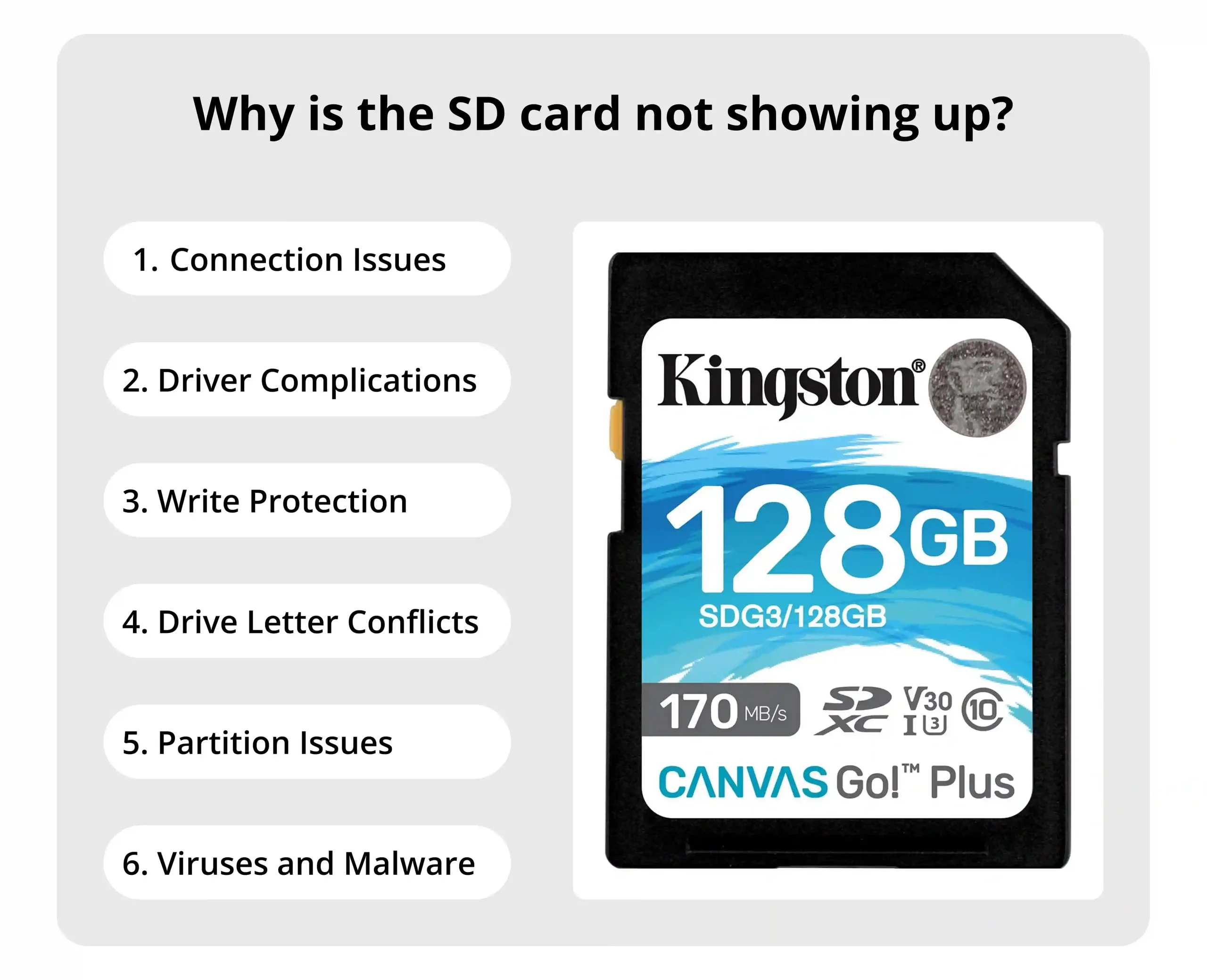
Driver Complications
If the SD card is visible in the Device Manager but not on the system, it could indicate that the card’s driver is either outdated or corrupted.
Write Protection
An SD card set to write-protected mode will not be recognised by the computer, preventing it from appearing in the file system.
Drive Letter Conflicts
The absence of a drive letter assigned to the SD card can cause the operating system not to detect it.
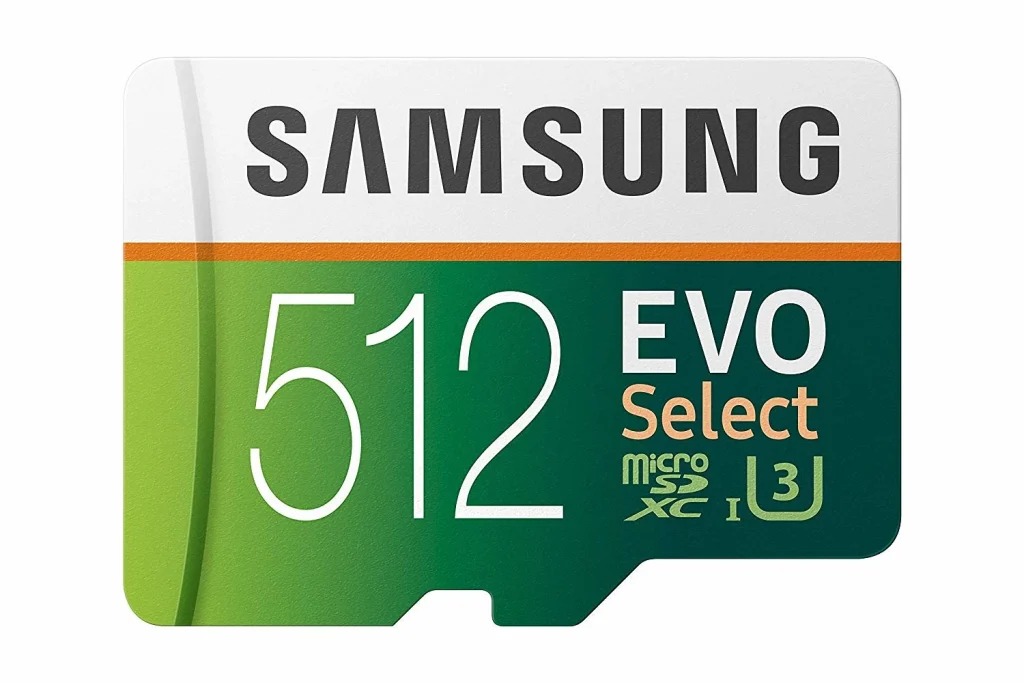
Partition Issues
When the partition on an SD card is accidentally deleted, it results in unallocated space, making it invisible to the system.
Viruses and Malware
A virus or malware on the SD card can corrupt files and data, causing detection issues.
How to Fix SD Card not Showing Up on Windows 10
For Windows 10 users, follow these actions to troubleshoot when your SD card isn’t showing up:
How to Troubleshoot SD Card Not Showing Up on Mac
If you’ve checked the SD card and it’s physically OK but not appearing on your MacBook Pro, MacBook Air, or any other Mac, here are efficient ways to solve this issue and make the SD card readable.
Conclusion
In summary, an SD drive not showing on your computer may have different causes. Follow these troubleshooting actions to identify and resolve the issue. Ensure your SD cards are correctly inserted, updated, and shielded from viruses and physical harm. Regularly backing up crucial data on your SD card can prevent data loss in case of unexpected issues.
Are you experiencing data loss on your SD card? Our team is prepared to help you recover your data. Rely on our SD Card Data Recovery Services to restore access to your personal data. Reach out now to begin the process with our expert engineers and swiftly regain your data through our services.
Frequently Asked Questions
How to recover data when the SD card is not showing up on Windows 10?
If you have experienced data loss on your SD card, utilising third-party recovery tools might seem like a quick fix. Yet, full recovery isn’t guaranteed, and the risk of permanent data loss stays high. These tools can sometimes cause further damage to the already fragile state of your data. Therefore, it is always advisable to seek professional assistance when dealing with lost data on your SD card.
Why is my SD card not being detected?
Your computer or device may not recognise your SD card for different reasons. One of the most common reasons is physical damage to the card itself, which can prevent it from being recognised. Dust, dirt, or water damage can also impact the card’s functionality. Additionally, compatibility issues may arise if the SD card is not supported by the device you are using.
Can you fix a corrupted SD card?
Fixing a corrupted SD card is possible, but success rates vary based on the severity of corruption and the methods used. First, connect the SD card to a computer and attempt to access the data via File Explorer. If the files are visible but not opening, it might be a file system issue, which can be resolved by running a disk repair utility such as CHKDSK in Windows or Disk Utility in macOS. Another method is formatting the SD card, which will erase all data but can make the card usable again.
Can I test the SD card on another device to check if it works?
Yes, testing the SD card on another device is a wise troubleshooting step. This can help determine if the issue is with the SD card itself or if it’s related to the device you were originally trying to use it with. If the SD card works on another device, the problem might be with the card reader or the settings on the original device. If it fails to function on any device, the SD card might be defective or corrupted, requiring additional actions to retrieve the data or restore the SD card’s usability.
What's the best way to recover deleted files from an SD card?
Losing important data from your SD card can take time and effort. Yet, you can recover deleted files. First, stop using the SD card to avoid overwriting lost data. While advanced data recovery software or DIY methods may seem appealing for their immediate access and low cost, they pose risks such as further data corruption or permanent loss. Considering these risks, it is advisable to seek professional help to recover data from an SD card.

